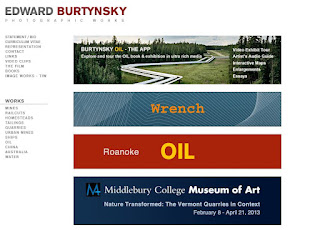During this workshop we had to work in groups and question everyone about what kind of photographer they want to be. This sessions is to start the process of identifying the area of professional practice you are interested in. We had to start to think about how we present ourselves and our work in relation to this identified area. Prior to the lecture we had to find two photographers we are interested in. I choose Peter Lik and Fergus Heron.
1. Describe the 2 photographers that you have brought in as examples. What is it about their work that interest you and how do they represent themselves.
Peter Lik is my all time favourite photographer. I had never heard of him until my trip to Miami last September. My boyfriend and I went shopping on Lincoln Road Mall - and it was so incredibly hot we had to go inside somewhere and we ended up entering Peter Lik's gallery. Both of us were amazed. Lik is a landscape photographer and conducted a 5 year project travelling through America capturing all it's beauty. All of his photographs are large panoramas and incredibly colourful and dramatic. The photo to the right is a snapshot of his website. You can see the the bright colours without even having to enlarge them. The style of photography is not the only think I like about him. I want to be a travel/landscape photographer myself and that's why Peter Lik is such a massive inspiration. Peter Lik's website is quite commercial, it has a lot of his work on there, but has a shop where you can buy his work and his books. It seems like his photography isn't necessaries about the meaning behind the photographs, but more about how aesthetically pleasing it is.
Fergus Heron is the completely opposite of Peter Lik. Heron's website shows a limited amount of work and doesn't have much information. It is a very simplistic website and not commercial whatsoever. I like Heron's work because of his deadpan style. A lot of my work has contained deadpan photography and I always end up returning to Heron's work for inspiration. Fergus Heron also has quite a bit of landscape photography, which is my favourite genre.
2. What sort of photographer do you think you are at the moment? What do you most enjoy photographing? What do you think you're good at?
As mentioned before, I want to be a landscape/travel photographer. Since being at Uni, I've been trying out a lot of different types and styles of photography, including fine art, band photography, portraiture, architecture etc, but I still am most enthusiastic about landscape and travel photography. I'd love to travel all over the world to build up a strong portfolio, but unfortunately I don' t have enough money for that. Another type of photography I really enjoy is nature: macro photography of insects and flowers.
3. Where would you like to see your work the future? For example, galleries, magazines, bill boards books etc.
I would love to one day have my own gallery. But before I get there I could see my work in travel related magazines or maybe the travel section of newspapers. I would also love to make my own book in the future containing a project that I have been working on for several years.
4. How does your current portfolio relate to the answers above?
My portfolio has been through a lot of changes in the past months. I'm trying to cut down the amount of photos I'm using and make it specifically on travel and nature seeing as those are my two main interests.
5. How does your set brief project relate to the answers above and your current portfolio?
For my set brief project I'm looking at succession in Horsell Common, so how the landscape changes over time in a natural way. Although it doesn't have anything to do with travel, it relates to landscape photography. I'm taking the photographs in a deadpan style of photography so that relates back to Fergus Heron's work.





